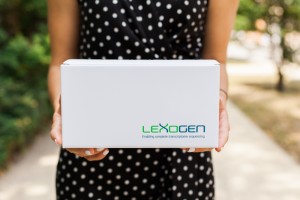Due to the rapid spread of COVID-19, the RNA Society will not hold its annual meeting in Vancouver as planned but has organized to move it online to maintain this crucial platform for the exchange of ideas and results. With more than 2600 participants and featuring 120 talks & over 700 posters on diverse areas of RNA science, RNA 2020 online is set to be the largest meeting of the RNA Society ever! We look forward to virtually meeting you there already next week!
As a true transcriptome company, Lexogen feels honored to be the Gold Sponsor of this meeting. We invite all participants to get the most out of RNA 2020 by viewing talks and posters, networking with other participants and exploring Lexogen’s offerings for RNA biologists. In particular we want to welcome the members of the 50+ worldwide RNA Salons, an RNA Society program that is co-sponsored by Lexogen since its inception in 2016.
RNA 2020 attendees can benefit in several ways from Lexogen’s Gold Sponsorship of the Society’s Annual Meeting 2020:
Lexogen Sponsored Seminar
We are honored to host the following talks in this session:

TraPR: a universal method for the rapid isolation of all known classes of functional silencing small RNAs
Thomas Grentzinger, PhD
PostDoc Researcher at ETH Zürich
Thomas Grentzinger1, Stefan Oberlin1, Gregory Schott1, Dominik Handler2, Julia Svozil1, Veronica Barragan-Borrero1, Adeline Humbert3, Sandra Duharcourt3, Julius Brennecke2 and Olivier Voinnet1
1 Department of Biology, Swiss Federal Institute of Technology (ETH), Zürich, 8092, Switzerland
2 Institute of Molecular Biotechnology of the Austrian Academy of Sciences (IMBA), Vienna, 1030, Austria
3 Institut Jacques Monod, Université de Paris, CNRS, Paris, 75013, France
Diverse classes of silencing small (s)RNAs operate via ARGONAUTE-family proteins within RNA-induced-silencing-complexes (RISCs). Here, we have streamlined various embodiments of a Q-sepharose-based RISC-purification method that relies on conserved biochemical properties of all ARGONAUTEs. We show, in multiple benchmarking assays, that the resulting 15-min benchtop extraction procedure allows simultaneous purification of all known classes of RISC-associated sRNAs without prior knowledge of the samples-intrinsic ARGONAUTE repertoires. Optimized under a user-friendly format, the method – coined “TraPR” for Trans-kingdom, rapid, affordable Purification of RISCs – operates irrespectively of the organism, tissue, cell type or bio-fluid of interest, and scales to minute amounts of input material. The method is highly suited for direct profiling of silencing sRNAs, with TraPR-generated sequencing libraries outperforming those obtained via gold-standard procedures that require immunoprecipitations and/or lengthy polyacrylamide gel-selection. TraPR considerably improves the quality and consistency of silencing sRNA sample preparation including from notoriously difficult-to-handle tissues/bio-fluids such as starchy storage roots or mammalian plasma, and regardless of RNA contaminants or RNA degradation status of samples.

RNA-Seq of dried blood spot samples using Lexogen’s QuantSeq 3’ mRNA-Seq FWD assay
Steve W.Cole, PhD
Professor at UCLA School of Medicine
Steve W. Cole1
1 Department of Psychiatry & Biobehavioral Sciences and Department of Medicine
UCLA School of Medicine
Norman Cousins Center for Psychoneuroimmunology
USC/UCLA Center of Biodemography and Population Health
UCLA Social Genomics Core Laboratory
Genome-wide RNA sequencing of whole blood samples has emerged as a powerful tool for analyzing biological mechanisms underlying social and environmental gradients in health, but utilization in population-based field studies has been hampered by logistical constraints, regulatory strictures, and costs associated with venipuncture blood sampling. Dried blood spots (DBS) provide a minimally invasive, low-cost alternative to venipuncture, that can be readily deployed to collect whole blood samples in field settings without the need for phlebotomy (and potentially by study participant self-collection with sample return by mail). DBS sampling thus enables the collection of blood biomarker data from research settings where other forms of blood sampling are impossible, as well as analysis of archival clinical samples (e.g., neonate heelstick DBS collected for disease screening). Surprisingly, desiccation of DBS stabilizes RNA over time by reducing hydrolysis and quickly inactivating RNAses. However, sequencing of DBS-derived RNA samples is complicated by limited RNA mass available in DBS (~10 ng, < 10% of typical venipuncture RNA) and mild degradation incurred during desiccation and storage (RIN ~5-8). This talk will describe the application of Lexogen’s QuantSeq 3’ FWD mRNA-seq counting assay to conduct high-quality genome-wide mRNA profiling in DBS samples. Compared to standard cDNA library preparation systems, QuantSeq is substantially more sensitive (a PCR step amplifies limited input mRNA), more robust to partial RNA degradation (focused sequencing of only the 3’ portion of mRNA misses most strand breaks), more efficient (maximizing the number of transcripts that can be sequenced in a given lane volume by focused sequencing of the 3’ portion of poly-A transcripts), and more cost-effective (<1/3 cost per transcript assayed). Due to the limited input RNA mass, QuantSeq assay of DBS samples inevitably yields greater noise than parallel analyses of high-mass RNA samples, and this talk will also describe the development of methods to mitigate those effects through specialized study designs (particularly enhanced sample size and repeated measurement), specialized post-run QC screening, and specialized statistical and bioinformatics analyses of transcript abundance data (e.g., focusing on pathways and other gene set measures to smooth over individual transcript-level noise). The Lexogen Sequencing Services team has experience conducting the specialized cDNA preps needed for DBS samples, and the NIH-funded UCLA Social Genomics Core Laboratory can provide additional consulting support in specialized study design and data analyses for DBS. This presentation will illustrate the substantive value of DBS RNA sequencing in a study of inflammatory signaling and pregnancy outcomes in archival samples and a randomized controlled field study of behavioral interventions. DBS should not supplant standard methods when venipuncture is feasible, but it does open up the potential for genome-wide transcriptional profiling in a wide range of archival and field studies where transcriptomic analyses were previously infeasible.

Nested barcode sets and sequences for the minimization of multiplexing-specific cross-contamination in RNA-Seq runs
Andreas Tuerk, PhD
Head of Bioinformatics at Lexogen
Andreas Tuerk1, Michael Moldaschl1, Torsten Reda1, Mira Schaupper1
1 Lexogen GmbH, Vienna, Austria
A critical consideration for any multiplexed NGS run is to avoid errors in the barcode (index) read-out, which can result in the mis-assignment of sequencing reads to the wrong samples. Barcode sets can be designed to minimize cross-contamination and maximize error-correction, with the optimum depending on the number of multiplexed samples and the barcode length. Since it is not feasible to provide different barcode sets for different sample numbers, we developed nested sets containing smaller subsets optimized for smaller sample numbers. When setting up an RNA-Seq run, barcodes are selected from the smallest subset fitting all samples to be multiplexed. In addition to the sets also the barcode sequences themselves are nested, with longer sequences having higher inter-barcode distances (IBD). This way, the best compromise between barcode-length and cross-contamination can be obtained. Additionally, subsets have a close to uniform nucleotide distribution at each barcode position, ensuring proper calibration of the base caller. We measure IBD with a modified Levenshtein distance allowing not only for the correction of substitutions but also of insertions and deletions. This IBD takes into account that indels can shift the sequencing window relative to the barcode position. Sequences adjacent to the barcode sequence can enter this window while barcode sequences can move outside. Further, the IBD does not obey the triangle inequality, and to avoid conflicts in error-correction, the empty intersection of decode spheres must be verified directly.
Our largest set contains 9216 barcodes, with subset sizes of 768, 96, 24, and 4, each containing a 12 nucleotide index with read-out lengths of 8, 10, and 12 nt. The subset with 4 barcodes has an IBD of 7 for the full read-out length of 12 nt. For each increase in subset size and for each shortening of the read-out length the IBD decreases by one.
We evaluated the quality of the 96 barcode subset and the effect of barcode read-out lengths in a unique dual indexing (UDI) experiment. Sequencing of 96 RNA-Seq libraries barcoded with our 12 nt UDIs on a NextSeq 500 yielded 514 M reads. The data evaluation revealed a single-index cross-contamination of 0.01% for all barcode lengths. Hence, for 96 samples at the given read-depth sequencing only the first 8 barcode nucleotides is sufficient.
Correcting one error increased the fraction of usable reads by 4% to 97% for the 8 nt read-out but also increased cross-contamination 10-fold to 0.1%. For read-out lengths of 10 and 12 nt, however, cross-contamination remained at 0.01%, while the retained reads increased to 97% as well, up from 92% and 91%, respectively. Hence, it is sensible to use a read-out length of at least 10 nt to correct a single error in a 96 sample set at the given read-depth. The 12 nt read-out, in turn, enables to correct not only one but two (or in very small sets, three) barcode errors.
Summarized, we have created nested sets of barcodes with nested sequences to allow the selection of subsets and read-out lengths optimized for individual multiplexing needs.
The talks are pre-recorded and available for viewing during the whole RNA 2020 event. When you enter the meeting site through the link which will be sent to all registered participants, filter by Session and choose “Sponsored Seminar Lexogen”.
All speakers will be available to answer your questions in a LIVE Q&A session on Thursday, May 28.
Our speakers will be available for 20 minutes in the following time slots:
- Thomas Grentzinger at 3.00 pm GMT (8 am PST)
- Andreas Tuerk at 3.20 pm GMT (8.20 am PST)
- Steve Cole at 3.40 pm GMT (8.40 am PST)
Find the ZOOM link for Q&A HERE.
You can also leave your question with us by e-mailing it to Lukas Paul – lukas.paul@lexogen.com and we will make sure they are answered in the Q&A session, which will be available for viewing afterwards as well.
Live Chat with Us!
A dedicated RNA 2020 team from Lexogen will be available for a Live chat during the event. Find us on ZOOM:
- Join us on Wednesday, May 27 – 1 pm – 5 pm GMT (6 am – 10 am PST)
- Join us on Friday, May 29 – 1 pm – 5 pm GMT (6 am -10 am PST)
We are looking forward to learning about your projects and introducing our solutions! If you are not available at these times, please leave us a message in this form, and we will contact you.
Participate in our Prize Draw!

For the 25th Annual Meeting of the RNA Society we have prepared something that is bound to grab your attention: Participate in our short survey and get a chance to win one set of Apple AirPods Pro!
A new product is coming soon! Stay tuned!

We will be releasing a new kit for Small RNA analysis soon.
Want to be informed among the first?
Subscribe to our newsletter or drop your contact details directly.








